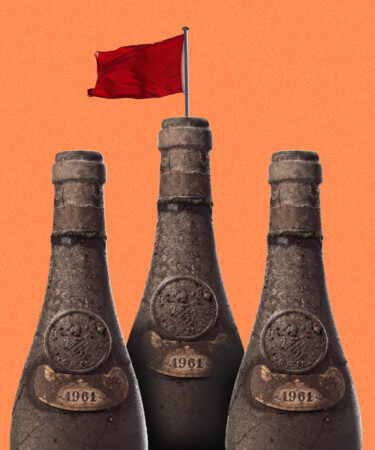Decoding a long wine list can be a stressful task. You have to decipher several languages, differentiate between minute subregions, and understand the style of each producer to narrow down the options. And even if you find the ideal wine, there’s still the matter of vintage.
Some deep, binder-length lists might have as many as 10 different vintages of a certain wine, all at different price points. It’s an easy assumption that as a wine ages, its value increases: More time goes into its storage and fewer bottles are available as the years pass, making older bottles more exclusive and difficult to find. But we’re here to tell you that this isn’t always the case, and older doesn’t necessarily mean pricier.
If age doesn’t directly translate to the price tag, then what’s the rhyme or reason to a wine’s worth? VinePair turned to two wine professionals, Christine Collado of online retailer Parcelle Wine and Julia Schwartz, wine director of wine-focused NYC restaurant, Claud, to help uncover why some vintages might cost more than others.
Aging Potential
“It can be tempting to view vintage and age as a direct correlation to quality, but there are many occasions where that is not true,” Schwartz says. One factor, she notes, is that not all wines are meant to age.
“Sometimes wine simply shouldn’t be as old as possible, and not every style of wine is well-equipped to age,” she says. “Youthful qualities in wine are great: freshness, buoyancy, tart fruits, sharp aromatics.”
Weather Conditions
But for wines that are known to be in it for the long haul like Burgundy and Brunello di Montalcino, there are factors that could change the availability and perceived quality of each vintage. Schwartz says fluctuating weather conditions can lead some harvests to produce fewer grapes, resulting in less product and higher prices for what’s available. And as extreme weather events like drought, fire, frost, and heat waves continue to impact wine regions around the world, vintage is an increasingly important factor to consider.
Several outlets publish vintage reports that proclaim the caliber of each year’s wines within a region based on the year’s weather and growing conditions. If a certain vintage is lauded by these reports, then the value of those wines can increase in accordance with this perceived quality. This data isn’t always the end-all, be-all, though.
“I’ll be honest and say I have a love-hate relationship with vintage reports,” Collado says. “I read them all the time, but feel the generality of them can lock you into a mindset. Tons of producers, especially in challenging vintages, have the ability to over-perform and exercise their super powers. This is when the winemaker proves their understanding of their land, technique, and adaptability.”
Changes in Ownership
Another factor to consider is the winemaker or ownership of the winery. As wineries change hands over time and move through generations, vintages crafted by the most revered winemakers might carry a bit more cachet. For example, a family-owned winery with tradition going back hundreds of years, renowned for its particular style, could be acquired by a larger company or appoint an outside winemaker. This could lead to changes in quality or flavor profile, making the vintages before the turnover more coveted.
Some wine professionals even consider the winery’s personnel more than the year’s weather conditions. “There are a lot of moving parts here and even in the community there is tons of debate about where years rank,” Schwartz says. “I lean towards trusting producers over anything, including vintage. I would much rather drink a ‘bad’ vintage from a storied, proven winemaker than a ‘good’ vintage from an inconsistent one.”
The Bottom Line
So, when it comes down to that moment to pick your poison at the restaurant or wine shop, how do you make a final decision?
Your best bet is to consult with the wine professional on staff who can help you find a bottle suitable for both your budget and the occasion you’re toasting to. These pros will also likely be familiar with how the wines have shifted year over year: One vintage might be more structured and full- bodied while another might be more ethereal and aromatic, so the right choice depends on what experience you’re looking for.
“Pricing wines on a list can be a very personal, strategic choice,” Collado says. “If you’re at a legit spot, with a real cellar of older vintages, priced well, it can be so rewarding and memorable. Chances are, the person curating the list wants to offer you an experience. Dig in, [and] ask questions.”
*Image retrieved from volff via stock.adobe.com
